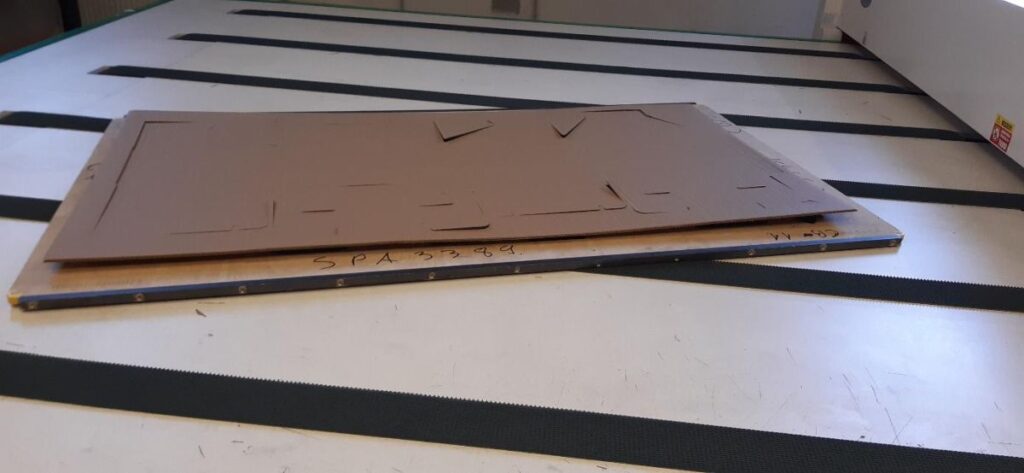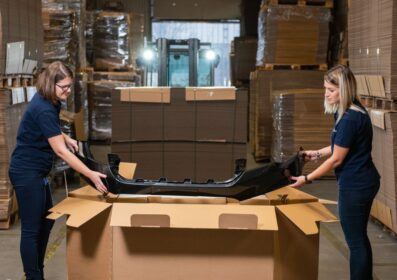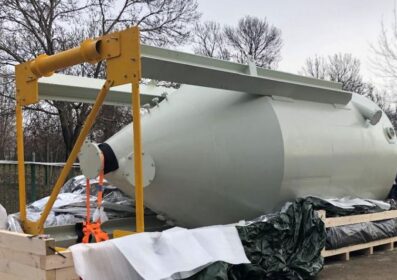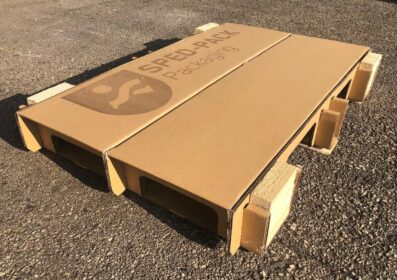Customized supplier packaging
Corrugated and cardboard packaging
Our company has partnerships with several logistics companies, one of which commissioned us to design the following customized transport packaging. As a logistics company, they are involved in packaging and shipping of multiple products, so in terms of the box, they didn’t want to design a box for one specific product, but potentially a wider range of products that could be used to package multiple goods.
In addition to the wider range of uses, it was important to our customers that the packaging should be quick and easy, so they wanted a solution for the boxes that would allow easy handling.
In addition, for each product group, they wanted the box to be reusable, so we were also asked to design packaging using a material that would be more durable.
Last but not least, it was also important that our box was cost-effective, because in addition to customer demand, our aim is to provide the most cost-effective solution to meet our customers’ needs.
Design
Design aspects
We started the design process by summarising these aspects:
- wider usability
- easy to use
- can be made from more durable materials
- cost-effectiveness
The basics
An obvious solution to the problem of more universal usability is the possibility of customising the size of the boxes. With this solution, we can reduce the number of boxes of different sizes, which is useful for several reasons. On the one hand, it is much more cost and time efficient to produce more of one product than the same quantity in two different sizes, as the changeover from one product to another requires a longer process. In addition, this solution is also more user-friendly, as it avoids the need to search for the right box for a given product, and it allows for the right packaging material to be stocked even if the composition and number of products to be packaged are not very predictable. Thus, this was the main consideration for the dimensions and the basis for the design.
Structural design
A common solution for customising the size of the boxes is to press the sides of the boxes in several places with folding edges. In this way, the user can decide which of the sizes defined by a given bend is the most optimal for him.
Although the production of plain top-flap boxes is particularly cost-effective and, for boxes of the minimum size of our machines, they do not require any other tooling, they have unfortunately not proved to be a suitable design in our case. Another important consideration for our customer was the ability to package their products quickly and smoothly. In the case of top-folded boxes, this solution slows down the process considerably, because if we want to shorten the height of the boxes, we have to cut the box along the four side edges to the desired folding edge. Not to mention the fact that if this is designed in a more robust material, which is most obviously plastic, it is not easy to cut into. In addition, these boxes are usually sealed with adhesive tape, which our customer also wanted to avoid.
With these considerations in mind, we have come up with a solution that allows the box to be closed by folding it in, both from the bottom and the top.
As for the bottom of the box, we had no difficulty in finding two solutions:
- a box with a self-closing bottom
This makes for easy handling, the bottom of the box can be opened by folding it out without any effort, but this solution also requires gluing the bottom of the box during production
- box with folded bottom
This solution requires a bit more effort, as you have to fold the bottom of the box into each other before packing, but it does not require extra gluing, which is more cost-effective
For the final solution, the folded bottom design was chosen in consultation with our customer.
The top of the box was a more interesting issue, how to combine the customisability of the box and the folding closure of the box without any extra effort and extra processes for the person doing the packaging, e.g. notching etc. We ended up designing each box for two different heights and designed the top of the boxes so that the box could be closed by sliding the tabs into each other. With this design, the edges of the boxes are already pre-cut along the bends to the lower height, but the design allows the box to remain stable when used at the higher height regardless of the notching of the sides.

Material selection
As the boxes were designed for a wider range of uses, this was a key factor in the choice of materials. As the material choice is primarily based on the weight of the products to be packed in the box, the material of the boxes was determined by the heaviest product to be packed in them. For corrugated board, this meant a medium-strength corrugated board.
Although a very strong corrugated sheet would provide adequate stability and make the packaging material reusable, it would not be resistant to certain influences such as moisture and would be much more difficult to manufacture and handle. Thus, for more durable boxes, the most obvious solution is plastic material, including cartonplast.
Cartonplast gives boxes the stability they need, but it is more flexible and resilient than other plastics, making it easy to fold the box and eliminating the fear of breakage.
Production
Corrugated board
In the case of corrugated sheet, due to its unique design, the boxes are manufactured on a die-cutting machine using a die-cutter.
Cartonplast raw material
In the case of the cartonplast material, due to the high volume of orders and the individually specified colour, the most efficient way to produce the boxes was to ask a partner company to help us. With the help of the die-cutter we are able to produce the box on the roller die-cutting machine, but when assembling we can only assemble the box by stitching, while our partner company was able to provide us with a more aesthetic finish by using plastic welding techniques.




